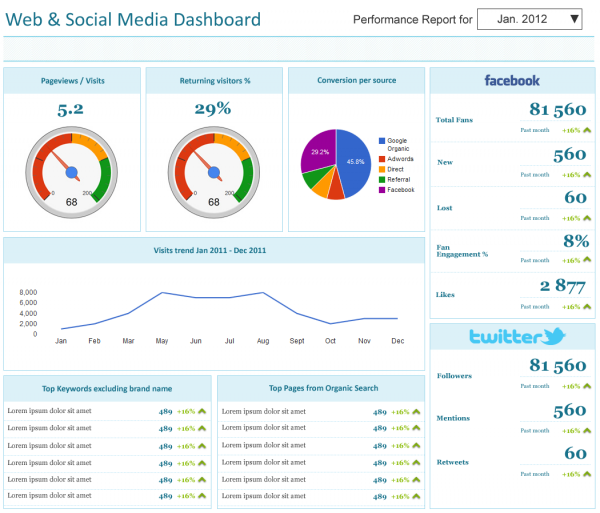There are a lot of social media metrics and measurement tools out there aimed at corporate users. Some of them are quite good. Some less so. But pretty much all of them require us to buy into the way in which they define and calculate success. The problem with this approach is that there is little or no opportunity to fine tune either the KPI (Key Performance Indicator – how success is defined) or the algorithm (how the metric is calculated). This probably isn’t a big deal for organisations with no clear social media strategy but for the increasing number of companies that know what they’re trying to achieve with which platforms it soon becomes a problem.
So what’s the solution?
Well, as far as I am aware there is no off-the-shelf system available (correct me if I’m wrong) that allows these sophisticated users to build their own social media dashboard and track the KPIs that they define on a regular basis. So it’s left to the social analytics geeks like me to build bespoke measurement models (usually in Excel, albeit with some useful, informative charts and graphs) and either keep them updated manually or invest a significant chunk of budget in developing a software-based solution (nice work if you can get it).
Regardless, there is still a process that needs following in order to create such a ‘dashboard’. Here’s mine:
1. Objectives
Everything must start with objectives. What are you trying to achieve? This is the only thing your KPIs should be tracking.
2. Competitors
Who are your competitors? Do you care what they’re doing? Is it important to be beating or challenging them? If so, then make sure you build competitor tracking into your KPIs. It also has a bearing on the metrics you’ll be able to use.
3. Data Sources
Which channels are you (and your competitors) using? If you’re using them, you should be including them in your measurement model. Don’t leave them out because you already know you’re not performing well in those areas.
4. Metrics
The tricky bit. What metrics can you extract from each data source/channel and how easily/inexpensively? There are compromises that might need making here depending on resources and budgets.
5. Behaviours
Armed with all of the above, it’s time to decide what behaviours on social media (both yours and others’) most accurately reflect the objectives you are trying to achieve.
6. Calculations
The clever bit. Now is the time to take the metrics and work out how they should be combined mathematically in order to create KPIs that accurately measure the identified behaviours on each platform.
7. Augmentation
For me, the last stage is the most important – and most frequently omitted. By augmenting the KPIs with other business data that also measures your objectives (such as incoming lead volumes, sales, customer service requests, customer satisfaction data, etc.), you can link social media activity and investment with real, hard numbers that the board will understand.
